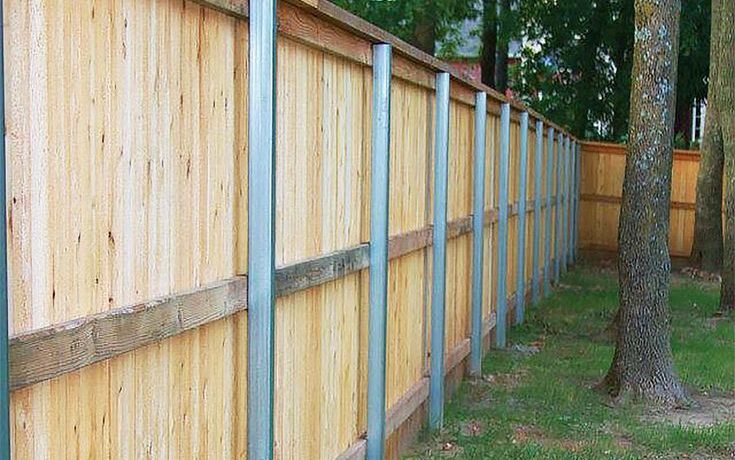All Categories
Featured

As sustainability becomes a concern for homeowners and businesses alike, the demand for environmentally friendly items, consisting of fencing materials, has climbed. Traditional secure fencing options such as plastic, wood, and metal can have negative environmental impacts, yet there are now numerous eco-conscious options to take into consideration. Picking environment-friendly secure fencing products not only helps minimize your carbon footprint but likewise adds to a more sustainable and all-natural setting.
- Bamboo Fencing. Bamboo is one of the most environmentally friendly fence choices available. Understood for its quick development and marginal ecological effect, bamboo is a highly renewable resource. Unlike traditional hardwoods, bamboo can be gathered in a few years and grows back swiftly, making it a lasting selection for secure fencing. It's solid, resilient, and immune to bugs, giving a elegant and all-natural choice for home owners.
Benefits: Bamboo is fast-growing, light-weight, and lasting. It needs fewer fertilizers and pesticides compared to other plants, making it a low-maintenance alternative. Factors to consider: While bamboo is sturdy, it may need periodic maintenance to secure it from weathering and natural wear. It can also be prone to breaking in colder climates. 2. Recycled Materials. Fencings made from recycled materials are becoming increasingly popular as an eco-friendly option. These fencings are made from post-consumer plastic, redeemed wood, and various other recycled products, maintaining waste out of land fills. Making use of recycled materials lowers the demand for new raw sources, reducing environmental deterioration.

Conveniences: These fences help in reducing waste and preserve all-natural resources. They are also usually low-maintenance and lasting. Factors to consider: While recycled fencings can be resilient, the appearances may not constantly match standard secure fencing options. Lots of designs are currently offered that simulate the look of wood or stone. 3. Compound Fencing. Composite fencing is made from a mixture of recycled timber fibers and plastic, using the look of timber without the environmental impact. Lots of composite fences are made from recycled material, further boosting their green status. These fencings are lasting, require minimal upkeep, and do not require to be treated with dangerous chemicals like typical timber fences.
Perks: Composite fences are long lasting, immune to rot, and require little upkeep. They additionally give a similar aesthetic to timber without logging issues. Factors to consider: While they are low-maintenance, composite fences may be much more pricey than traditional wood or vinyl options. The manufacturing process can also be energy-intensive. 4. Cedar and Redwood Fencing. Cedar and redwood are natural wood products that are often thought about a lot more eco-friendly contrasted to other hardwoods. These types of timber are normally resistant to degeneration, insects, and wetness, which decreases the requirement for chemical treatments. In addition, these trees are grown in lasting woodlands, guaranteeing that they are collected sensibly.
Perks: Cedar and redwood are both normally lovely and sturdy products. They supply all-natural resistance to bugs and rot, which assists lower the requirement for chemical treatments. Factors to consider: These woods can be a lot more costly than other options. They additionally need periodic maintenance, such as sealing or discoloring, to make certain long life. 5. Living Fences (Hedges and Hedges) Living fencings, made from trees, hedges, or shrubs, are an eco-friendly alternative that additionally supplies all-natural personal privacy and visual charm. Plants such as privet, boxwood, bamboo, and arborvitae are frequently used for developing dense, green fencings. These living obstacles aid with noise reduction, improve air quality, and give environment for local wild animals.
Perks: Living fences advertise biodiversity, boost air quality, and boost the aesthetic appeal of your building. They likewise soak up co2 and add to a greener atmosphere. Factors to consider: Living fences require maintenance, such as trimming and watering, to guarantee they expand appropriately. They might not offer the very same level of protection as traditional secure fencing products. 6. Stone and Reclaimed Brick Fence. Stone and recovered brick fencings are one more eco-friendly alternative. These materials are resilient, need minimal upkeep, and have a lengthy life expectancy. When reclaimed from old structures or frameworks, they help lower the demand for brand-new materials and protect against waste from going into landfills.
Conveniences: Stone and brick are resilient, weather-resistant, and provide a classic, traditional visual. Recovered materials also have a very little ecological impact. Factors to consider: The installment of stone and block fencings can be labor-intensive, and the materials might be more pricey than various other alternatives. The lasting longevity and reduced upkeep expenses can make them a beneficial financial investment. Verdict. Picking an environment-friendly secure fencing product is a wise means to reduce your environmental impact while improving your property's privacy and aesthetic allure. Bamboo, recycled materials, composite fence, and living fences all provide lasting options that reduce waste, conserve sources, and advertise a greener way of living.
By picking one of these environment-friendly secure fencing options, you add to the protection of the atmosphere while developing an attractive, practical exterior space. The ideal product will certainly depend on your preferences, environment, and the degree of upkeep you want to provide, yet rest guaranteed that there are many eco-conscious choices that straighten with your sustainable way of life.
Latest Posts
Discover Outstanding Vehicle Maintenance Care in Chicago – Drive with Confidence
Published May 27, 25
1 min read
Uncover Cost-Effective Auto Repairs with Montclare’s Limited-Time Service Specials
Published May 26, 25
1 min read
Find Brake Repair & More: Complete Services Guide from Montclare Auto Repair
Published May 26, 25
1 min read
More
Latest Posts
Discover Outstanding Vehicle Maintenance Care in Chicago – Drive with Confidence
Published May 27, 25
1 min read
Uncover Cost-Effective Auto Repairs with Montclare’s Limited-Time Service Specials
Published May 26, 25
1 min read
Find Brake Repair & More: Complete Services Guide from Montclare Auto Repair
Published May 26, 25
1 min read